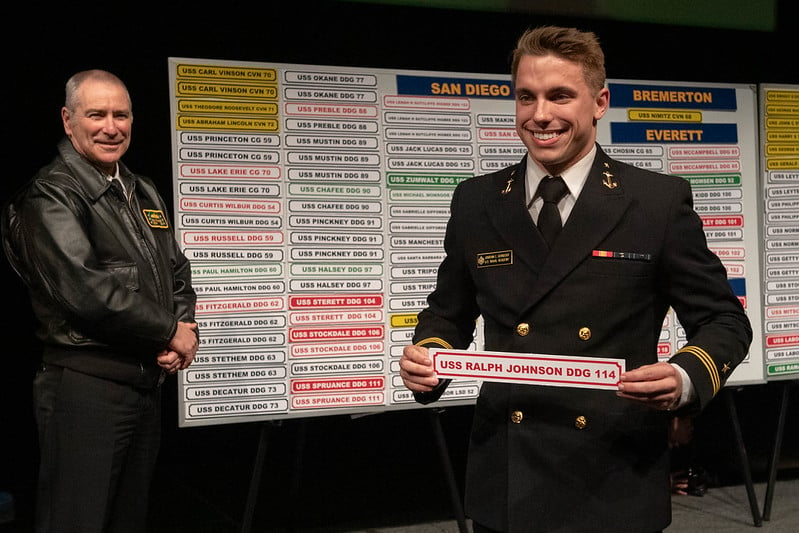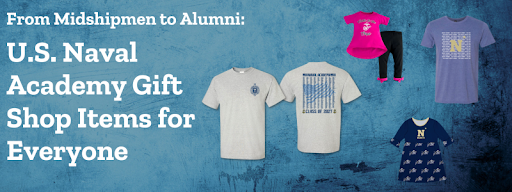“No other 22 to 26 year-olds on this planet are doing what we’re doing,” says a Navy surface warfare officer (SWO) off-camera in this riveting video about the role. “Anything you can think of on the ship, as a SWO, you need to be able to speak to it, to know about it, to be able to command the ship eventually. This is a pipeline to become a captain.” The job of SWO is a serious one, and these words are not to be taken lightly. As the USNA website proclaims, “The Surface Fleet is the backbone of America’s Navy.” Here, we’ll take a closer look at the critical role SWOs play in the strongest Navy in the world.
What is a Navy Surface Warfare Officer?
Naval Academy midshipmen spend four rigorous years training to become naval officers. Upon graduation, Naval Academy Graduates commission as Ensigns in the U.S. Navy and get assigned a role in a unique service community. Among several options, one of the most popular roles is that of a Surface Warfare Officer, or a SWO. In fact, in the current graduating class, 300 of the 1,000 total were assigned to become SWOs.
Once selected for surface warfare, midshipmen can choose the type of ship and the home port of their first duty assignment on Ship Selection Night. The Navy positions nine types of surface ship classes throughout the world to help keep our shores, seas and airspace safe. These include various cruisers and destroyers, amphibious assault vessels, littoral combat ships (LCS) and mine countermeasure and patrol craft. SWOs serve on every one of these.
Their first duty typically lasts approximately 24 months. Once onboard, they have immediate responsibility for the ship’s performance. While they start as division officers, SWO candidates are working towards getting their SWO insignia. They’ll lead about 12-50 enlisted sailors, and manage a segment of the ship’s operations and equipment. Roles can range from anti-submarine warfare officer, to gunnery officer, to communications officer, to damage control assistant. As they perform these duties, SWO candidates also train for higher levels of responsibility, including qualification as combat information center watch officer, officer of the deck and of course, Navy surface warfare officer.
Related: USNA Ship Selection 2023
The Path to SWO
While many SWOs come from the U.S. Naval Academy, there are several other paths to becoming a SWO. First, you must be a U.S. Citizen. Second, at minimum, you’re required to have earned a degree from a four-year college or university. In addition to becoming a SWO through USNA, you can also prepare through the Naval Reserve Officers Training Corps (NROTC). If you already have a degree, you can opt to attend Officer Candidate School (OCS), a 12-week Navy school in Newport, Rhode Island.
On the Ship: What Does a SWO Do?
Life as a SWO is very dynamic, as they have the opportunity to participate in almost all aspects of critical Navy missions. Both onshore and at sea, SWOs manage a number of important roles. On shore, these roles range from Pentagon tours of duty, to student assignments at the Naval Postgraduate School in Monterey, CA, to teaching ROTC at acclaimed colleges, to command and management positions at shore bases and stations across the globe—and much more.
SWOs are assigned to sea duty work aboard state-of-the-art ships within the U.S. naval fleet. While deployed, they fill essential roles in a variety of shipboard operations and activities working with or within any number of specialized forces:
- Aircraft Carrier Forces: Provide and coordinate air, submarine and surface ship defense for aircraft carriers.
- Cruiser-Destroyer Forces: Provide ship attack and defensive measures with a wide array of missile and fire power capabilities, providing anti-air, submarine and surface warfare support.
- Amphibious Forces: Embark and transport vehicles, equipment and personnel for amphibious assault operations.
- Combat-Logistics Forces: Provide combatant ships with fuel, ammunition, food and supplies; also provide repair, maintenance and rescue capabilities through Fleet Support Ships.
- Mine Warfare Forces: Detect, identify and neutralize threats from hostile use of maritime mines.
- Navy Nuclear Community: Work on some of the world’s most powerful nuclear-powered submarines and aircraft carriers.
SWO Missions
Within these roles, SWO’s pursue two types of missions: Basic and advanced.
Basic Missions:
- Aviation Missions: Whether they’re helping with Search and Rescue missions or Anti-Submarine Warfare, helicopters and fixed wing aircraft rely on surface ships to position, refuel and prepare them for their missions.
- Damage Control Missions: Ships are not immune to the disasters that plague our shores. SWOs must know how to combat everything from fires, to flooding, to toxic gas. These crucial skills help keep the fleet safe at sea.
- Seamanship Missions: Naval ships with their own VBSS (Visit, Board, Search and Seizure) teams perform the important work of checking ships for contraband, guarding the seas against piracy and other dangers.
Advanced Missions:
- Anti-Air Warfare: Aegis Cruisers and Destroyers engage in Anti-Air Warfare to defend themselves and the other high value assets like Aircraft Carriers and large deck Amphibious ships from attack by enemy missiles and aircraft.
- Amphibious Warfare: “L Class” ships conduct amphibious warfare to safely transport Marines ashore anywhere in the world.
- Ballistic Missile Defense: Some cruisers and destroyers can deploy Aegis Ballistic Missile Defense to guard both allies and the US homeland from the threat of ballistic missile attack.
- Visit, Board, Search and Seizure (VBSS): Naval ships with their own VBSS (visit, board, search and seizure) teams perform the important work of checking ships for contraband, guarding the seas against piracy and other dangers.
- Mine Warfare: Mine-Countermeasure ships (MCMs) engage in mine warfare to overcome one of the world’s widely available threats to both military and commercial shipping—naval mines.
- Anti-Submarine Warfare: This type of combat is primarily implemented by cruisers and destroyers to detect, track and if required, destroy enemy submarines.
As you can see, the life of a SWO is full of adventure. There are so many incredible opportunities to serve our country in this fulfilling role, and it often serves as a launching pad to even greater responsibilities.
As you can see, the life of a SWO is full of adventure. There are so many incredible opportunities to serve our country in this fulfilling role, and it often serves as a launching pad to even greater responsibilities.
Related: Career Opportunities for USNA Graduates
Where SWOs are Made
At USNA, we are proud to support our midshipmen as they prepare to become SWOs. Do you know how you can support them too? The Naval Academy Business Services Division supports the Brigade of Midshipmen by donating proceeds from our 20 business units that allow our midshipmen to be successful, well rounded future leaders. We support a variety of extracurricular activities such as cultural arts, theater, music, club sports, and a variety of other activities.When you explore USNA, you’re giving back too. NABSD and the future SWOs thank you for your support.
-1.png)










